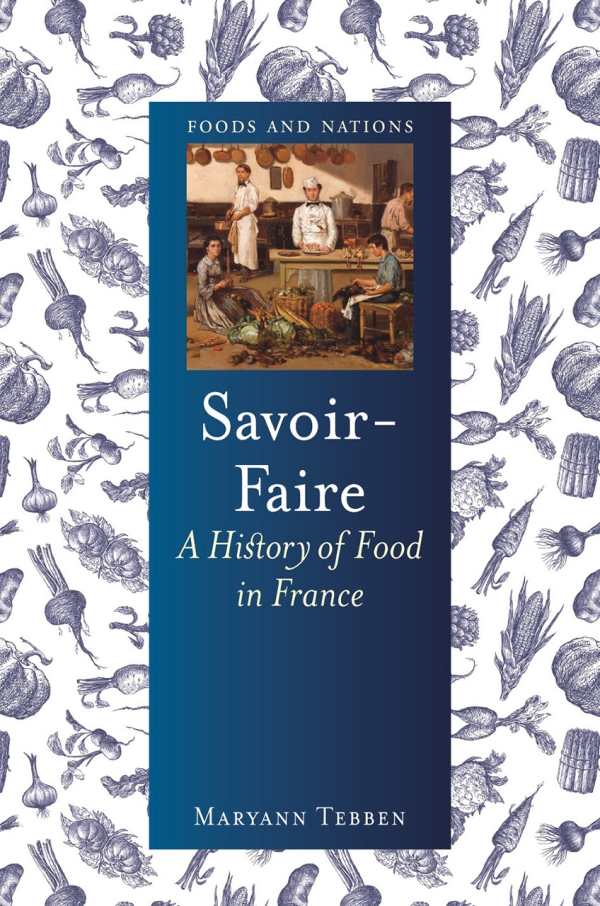Savoir-Faire
A History of Food in France
The French are acknowledged to have the world’s most elegant, sophisticated cuisine, but how did this reputation and style of cooking evolve? In Savoir-Faire, Maryann Tebben teases out centuries of culinary history and its role in creating France’s national identity, relating how French food became such an elite “monolithic presence.”
This is a chronicle of how French cuisine reflects its cultural traditions, with delightful meanderings about what workers ate, the influence of female chefs in the provinces, scientific and agricultural innovations, and how colonial products and dishes have been allotted space in the classical food pantheon. From the robust, pig-centric meals of the Franks, which set the table for “the embrace of pleasure over moderation,” Tebben charts the influential development of courtly Renaissance feasts and the first printed cookbooks, which staked out French gastronomic dominance with terminology, recipes, and cooking techniques that endure today.
Naturally, there are discussions of champagne, France’s iconic cheeses, and the development of restaurant culture, along with interesting notes about how religious practice and monasteries shaped France as a wine-drinking, bread-baking nation. Tebben shows how Revolutionary egalitarianism made affordable, high-quality foods a French person’s birthright, controlled by its Paris-centric markets and transportation systems, agricultural development patterns, and government and guild and labor policies.
Tebben’s overarching theme is that French food’s perceived superiority is based on a constructed, culture-wide narrative, reinforced with panache and passion in France’s art and literature and enshrined in protectionist regulation. She argues that everyone from rural farmers and cheesemakers to Parisian haute cuisine restaurateurs believes in and reinforces the myth that French cuisine is the ne plus ultra.
Savoir-Faire underscores that, while France may never have been a military colossus, it has conquered the world with its “aesthetics and artistry, incomprehensible nomenclature and an indefinable but irresistible stylishness, especially in the culinary arts.”
Reviewed by
Rachel Jagareski
Disclosure: This article is not an endorsement, but a review. The publisher of this book provided free copies of the book to have their book reviewed by a professional reviewer. No fee was paid by the publisher for this review. Foreword Reviews only recommends books that we love. Foreword Magazine, Inc. is disclosing this in accordance with the Federal Trade Commission’s 16 CFR, Part 255.

